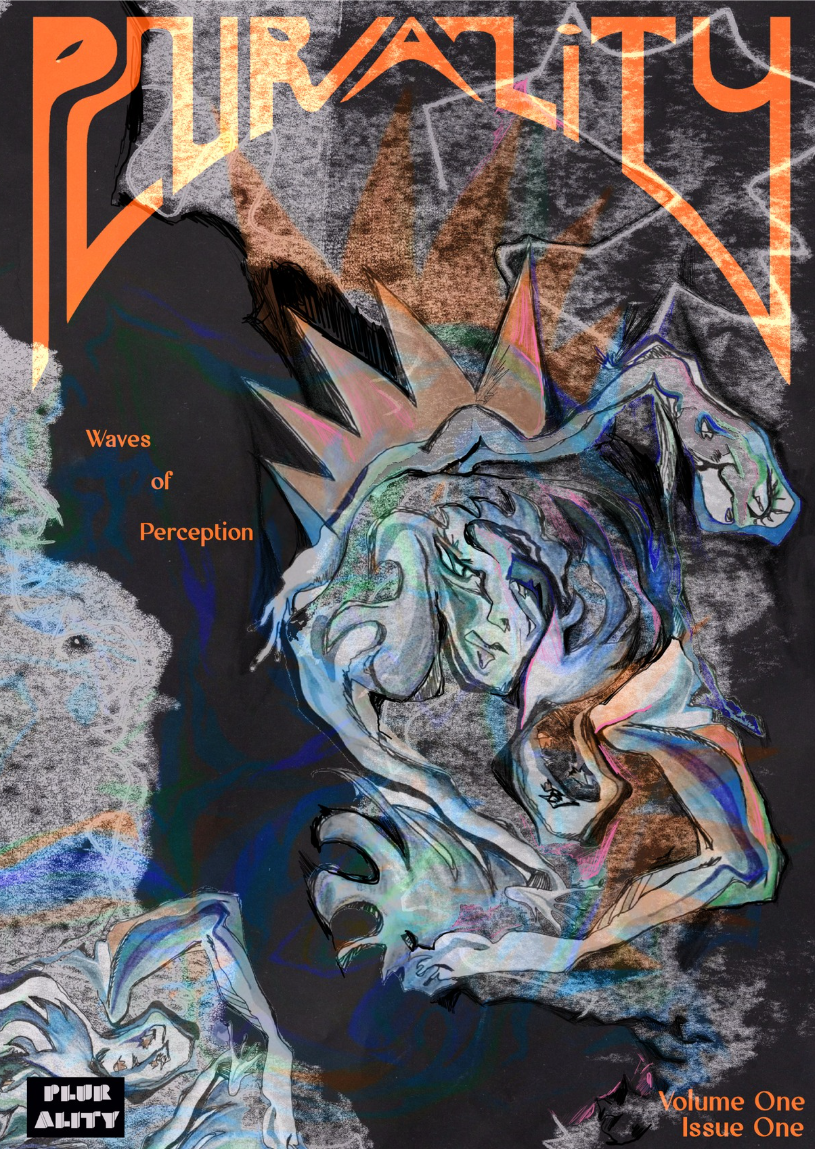Removing the Binary: An Exploration on the Impact Language has on Our Gender Perception
DOI:
https://doi.org/10.2218/plurality.10072Keywords:
Gender Perception, Gendered Language, Default Masculine, Degendering LanguageAbstract
Language, as a reflection of societal values and beliefs, wields the power to shape perceptions of gender, often perpetuating a binary understanding through grammatical gender systems. The influence of the generic masculine and masculine norm within languages with dense grammatical gender reinforces this binary, marginalizing communities and centralizing power within the masculine form. Despite these challenges, endeavours towards gender neutrality within grammatical gender languages offer hope, particularly in their potential to benefit marginalized groups like the LGBTQ+ community. However, while recent advancements demonstrate potential for gender neutrality within language, the possibility of achieving a genuine ‘gender-free’ language remains a question, especially within grammatical gender languages and beyond. In order to begin answering this question, one needs to understand the concept of ‘gendered language’ and how it has impacted our perception of gender throughout history. It is also necessary to analyse how recent linguistic adjustments impact the LGBTQ+ community and the changes in attitudes towards non-binary spaces. By comparing attitudes towards gender in grammatical gender and genderless languages, we gain insight into the intricate relationship between language and societal norms. To do that one needs to look at the contemporary languages such as English, Spanish and Swedish, which are undergoing gender-neutral adaptations within the core lexicon and grammar. In addition to indigenous languages that have historically included a form of gender neutral language. In essence, this examination of language and gender dynamics offers the conclusion that it is possible to remove gender from language, yet cannot change the impact that gendered language has already had on society’s perception of gender.
Downloads
References
Arnold, J.E., Mayo, H.C. and Dong, L. (2021). My pronouns are they/them: Talking about pronouns changes how pronouns are understood. Psychonomic Bulletin & Review, 28.
Bonnin, J.E. and Coronel, A.A. (2021). Attitudes Toward Gender-Neutral Spanish: Acceptability and Adoptability. Frontiers in Sociology, 6.
Bouteillec, N.L. and Garnier, L. (2020). Hen and the pursuit of equality in Sweden. Cahiers du Genre, 69(2), pp. 205–229.
Chatzidavidou, I. (2023). On Translating Gender: Empowering Equality through Language. [online] VISION_FACTORY. Available at: https://www.visionfactory.org/post/equality-through-language.
Frye, M. (1983). The politics of reality: essays in feminist theory. Trumansburg, New York: Crossing Press, pp. 1–16.
Gustafsson Sendén, M., Renström, E. and Lindqvist, A. (2021). Pronouns Beyond the Binary: The Change of Attitudes and Use Over Time. Gender & Society, 35(4), pp.588–615. doi:https://doi.org/10.1177/08912432211029226.
Hord, L.C.R. (2016). Bucking the Linguistic Binary: Gender Neutral Language in English, Swedish, French, and German. Western Papers in Linguistics, 3(1).
Igbe, E. and Damkor, T. (2021). Gender Bias among Tiv Language Speakers. IOSR Journal of Humanities And Social Science (IOSR-JHSS), 26(2), pp. 44–49.
Jakiela, P. and Ozier, O. (2018). Gendered Language. Rochester, NY: World Bank Policy Research Working Paper No. 8464.Kristianto, B. (2016). Two-Spirits and The Decolonization Of Gender. Paradigma, Jurnal Kajian Budaya, 1(2), p.119.
LeMaster, B. (2006). Language Contraction, Revitalization, and Irish Women. Journal of Linguistic Anthropology, 16(2), pp.211–228. doi:https://doi.org/10.1525/jlin.2006.16.2.211.
Mazzuca, C., Majid, A., Lugli, L., Nicoletti, R. and Borghi, A.M. (2020). Gender is a multifaceted concept: evidence that specific life experiences differentially shape the concept of gender. Language and Cognition, 12(4), pp.1–30.
Milles, K. (2011). Feminist language planning in Sweden. Current Issues in Language Planning, 12(1), pp.21–33. doi:https://doi.org/10.1080/14664208.2011.541388.
Nazlıpınar Subaşı, M.D. (2020). THE POWER OF MAN-MADE LANGUAGE IN THE CONSTRUCTION OF GENDER. Kesit Akademi, 25(25), pp.41–56.
Papadopoulos, B. (2019). Morphological Gender Innovations in Spanish of Genderqueer Speakers / Innovaciones al género morfológico en el español de hablantes genderqueer. Thesis.
Pieciul-Karmińska, E. (2018). Nijakość w języku i neutralność w literaturze jako sygnał odmienności kulturowej? Etnolingwistyka. Problemy Języka i Kultury, [online] 30, p.113. Available at: https://www.researchgate.net/publication/336241842_The_neuter_in_language_and_neutrality_in_literature_as_signals_of_cultural_otherness.
Prewitt-Freilino, J.L., Caswell, T.A. and Laakso, E.K. (2011). The Gendering of Language: A Comparison of Gender Equality in Countries with Gendered, Natural Gender, and Genderless Languages. Sex Roles, 66(3-4), pp.268–281.Ratanaphithayaporn, J. and Rodrigo , R. (2020). Gender inclusive language Impacts on international university students' perception of how involved they are in society.
Robinson, M. (2019). Two-Spirit Identity in a Time of Gender Fluidity. Journal of Homosexuality, 67(12), pp.1–16.
Rose, F. (2015). On Male and Female Speech and More: Categorical Gender Indexicality in Indigenous South American Languages. International Journal of American Linguistics, 81(4), pp.495–537.
Saul, J. and Diaz-Leon, E. (2017). Feminist Philosophy of Language (Stanford Encyclopedia of Philosophy). [online] Stanford.edu. Available at: https://plato.stanford.edu/entries/feminism-language/.
Silva, G.V. and Soares, C. (2024). Inclusiveness Beyond the (Non)binary in Romance Languages: Research and Classroom Implementation. 1st ed. Google Books. Taylor & Francis.
Spinelli, E., Jean-Pierre Chevrot and Léo Varnet (2023). Neutral is not fair enough: testing the efficiency of different language gender-fair strategies. Frontiers in Psychology, 14.
Teixeira, Q. and Pilar, M. del (2022). The Influence of Feminism and LGBTQ+ Movements on Language Change in English: The Expansion of Gender-neutral Language. Dissertation . minerva.usc.es.Teso, E. (2010). A COMPARATIVE STUDY OF GENDER-BASED LINGUISTIC REFORM ACROSS FOUR EUROPEAN COUNTRIES ELENATESO. [Thesis] Available at: http://researchonline.ljmu.ac.uk/id/eprint/5952/1/515531.pdf.
Vasquez, J.S. (2021). Una historia panorámica del ‘género gramatical’ en la lengua española: ¿es el género una ‘clase sexual’?. Tonos digital: Revista de estudios filológicos, (40).
Vergara , G.S. (2020). Género gramatical, sexo y género social. Academia Chilena de la Lengua y Catalonia.
Vergoossen, H.P., Pärnamets, P., Renström, E.A. and Gustafsson Sendén, M. (2020). Are New Gender-Neutral Pronouns Difficult to Process in Reading? The Case of Hen in SWEDISH. Frontiers in Psychology, 11.
Wallner, L. and Eriksson Barajas, K. (2022). ‘It’s not her, it’s hen’ – situated classroom use of the Swedish gender-neutral pronoun hen. Classroom Discourse, pp.1–17. Available at: https://doi.org/10.1080/19463014.2022.2084427.
Downloads
Published
Issue
Section
License
Copyright (c) 2024 Ellie Robertson

This work is licensed under a Creative Commons Attribution-NonCommercial-ShareAlike 4.0 International License.






